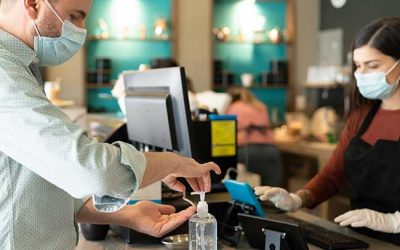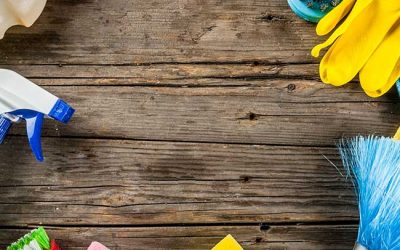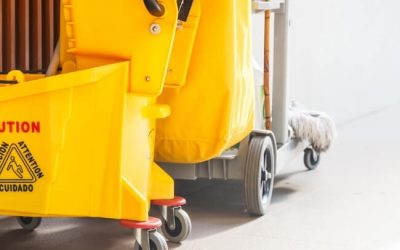High traffic environments, including public transportation, are breeding grounds for dangerous microorganisms that are a threat to public health and safety. With constant travelers, it is impossible to keep these areas disinfected with the use of only traditional sanitization methods.
Canada is the second-largest country by mass, and as a result, home to various means of transportation. We have access to 10 major airports, numerous harbours, railroads, and city bus systems. These public transit systems are the primary means of transportation for many citizens. More than 20% of the population in Metro Vancouver and about 23% in Greater Toronto rely on public transportation for their daily commute. In the United States, public transit is vital to highly populated regions as well, including public buses, aviation travel, and subway trains. There are 27 different subway lines in New York City alone. Amid the deadly viral pandemic of Coronavirus 2019, that has killed more than 1 million people worldwide, what can we do to keep citizens safe while on public transit?

The Dangers of Public Transit
With a current global pandemic, many citizens are afraid of using public transportation, and rightfully so. Aside from the obvious threats of vehicle collisions, or harassment, while on public transportation, there also lies invisible threats. High amounts of dangerous pathogens are notoriously present on public transportation and can infect passengers will various ailments. Being encased in small areas, with numerous people, for an extended period of time will significantly increase one’s risk of contracting an illness. Although the mandate to wear masks in many cities while on public transportation is mitigating some of the risks, it does not address the risk of infection from surfaces. Any crowded area that is frequently occupied is a danger zone for these microorganisms. Common threats found in public transportation include:
- Bacteria- Staph and E. Coli are very common in high traffic environments. Staph infections are particularly frustrating, as these infections are resistant to many antibiotics. In those with weakened immune systems or other vulnerable populations, staph infections have even led to death. It is estimated that around 11,000 people die a year in the United States from an MRSA (Staph) infection. E. Coli infections are also a huge threat to the public and can lead to serious infections. E. Coli is a bacterium found in feces, and often is spread by improper, or lack of handwashing.
- Fungi- The same fungus related to an athlete’s foot can also affect the skin, this is known as ringworm. This fungus spreads easily through contact with a surface that is contaminated. This could include seating, rails, and even walls in public transportation.
- Cold and Flu- These viruses are spread through close contact with another individual. These highly contagious illnesses spread through small droplets in the air, when the infected talks, sneezes, or talks.
- Coronavirus 2019- COVID-19 can travel through the air and on surfaces. There is not enough scientific data regarding this illness, to understand how it works, or the long-term prognosis for survivors. Canada has over 220,000 cases of COVID-19, with nearly 10,000 lives lost to this deadly virus. While the United States is seeing a resurgence of cases, 8.78 million at the time of this writing.

*Many countries and healthcare organizations do not report all death causes, therefore, these are estimates.


The Problem with Traditional Disinfection
It is important to clean and disinfect all surfaces in public spaces regularly, regardless of which methods you chose. Traditional disinfection methods may kill germs on contact, but that is where their effectiveness end. Traditional sanitation measures alone are not sufficient protection for the public. The issue lies in that shortly after all surfaces are thoroughly disinfected, they are once again infected when a virus or bacteria comes back into contact with them. Studies show that within a mere three days after disinfection microbe levels are back to pre-disinfection levels.
Some cleaning services have even profited from the public’s fear and panic resulting from Coronavirus 2019. These services offer full room, business, or transit vehicle disinfection. Unfortunately, these businesses mislead consumers into paying for services that only use traditional, ineffective sanitation methods, yet they assure the customer, that the environment is now safe. The surfaces they cover are ‘clean’ after they perform the fogging, or spray of disinfectant. But as soon as germs touch the surfaces, they are once again contaminated. These unsuccessful cleaning agencies often cause an unwarranted complacency for employees, and transit frequenters, as they create a false sense of security. This false security can result in relaxed precautions and spikes in illnesses.


Why Choose Select Shield for Public Transit
There are numerous benefits to choosing Select Shield to perform your antimicrobial coating. By using an electrostatic sprayer, this allows 360-degree coverage for all surfaces, above and underneath. Our solution is also unlike others in terms of effectiveness. Many sanitation solutions merely react to dangerous threats and pathogens. Our solution, however, is different as it is proactive than only reactive. Other benefits of choosing Select Shield include:
- Safety – Our product can be used on a variety of surfaces and non-toxic once dry.
- Time Efficiency – We will certainly schedule a time that works best for you, outside of customer hours. The entire process can typically be completed in less than four hours. Surfaces are safe to use almost immediately afterward, causing no downtime.
- Long-term Protection, Consistent, Coverage – Our services will protect all surfaces from viruses and bacteria for 7 to 10 days. Mould, mildew, and fungi threats will be eliminated much longer. The antimicrobial coating will not wash off with regular cleaning and disinfection. It would take intentional abrasive scrubbing to even damage the surface of our antimicrobial coating.
- Unmatched Customer Satisfaction– We offer the most reliable customer service, competitive prices, and impressive results of any sanitation company in the industry. We are available 24 hours a day for emergency calls and can even respond in person in as soon as the next day. Our work is always well received, and we guarantee your satisfaction.

- Call, or email us, to determine and arrange a time, and location, that works for you.
- A skilled Select Shield technician will arrive and perform surface testing determine how clean your high touch and high traffic surfaces would be Inside public transit, there will be numerous test locations.
- Our Select Shield technician will then perform thorough disinfection before applying the antimicrobial solution.
- Using an electrostatic sprayer, the technician will coat all surfaces.

Email us today for more information info@selectshield.ca
Or call +1.833.606.2360 to reach us directly.
You can also call our headquarters in Canada or the United States for assistance.
Canada
Richmond, British Columbia
United States
Las Vegas, Nevada
We look forward to speaking with you and serving your disinfection needs.





